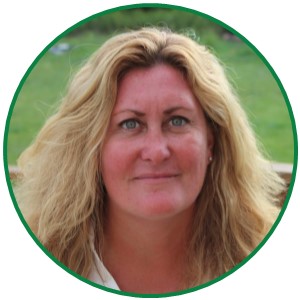| | The Intake Your Source for Collaborative News June 2021 |
|
|
|
|
| | Strategic Plan is almost complete! Wow - what a ride this has been. We've come so far in the strategic planning process, and all thanks to your engagement and brilliant ideas. Cadmus Group is crossing the t's and dotting the i's as we speak - again, thanks for your extremely helpful survey feedback! In this final step, we invite you to join us for a celebratory full-partnership Gathering at the end of this month. During this meeting, we’ll give ourselves a collective pat on the back, celebrate the completion of the plan, and talk about what’s next to move from planning to implementation. |
| We look forward to seeing you on Tuesday, June 29th at 2pm. Zoom info below: Join Zoom Meeting: https://zoom.us/j/93265064704 Meeting ID: 932 6506 4704 We recommend joining with your computer audio, or you can dial-in at 1-301-715-8592 |
|
|
|
|
| | Sharing our story regionally and internationally Collaborative partners had tremendous opportunities to share lessons learned and updates on our progress at two events recently. Read below about these exciting presentations... |
|  | Berkeley Springs International Water Tasting Festival Kristin Mielcarek with Canaan Valley Institute, along with Tanner Haid, shared a presentation regarding the benefits of riparian forest buffers to protect drinking water. They discussed how buffers work, and what can be done locally to implement new buffers for achieving water quality benefits. |
|
|
| | Around the Collaborative If you have exciting news, please let us know and we'll share with our partners in next month's edition. |
|
|
|
|
| The Chesapeake Bay Program’s 2019-2020 Bay Barometer report was released in April 2021. It contains the most up-to-date status for each of the 31 outcomes of the Chesapeake Bay Watershed Agreement. Twelve of these outcomes were updated in the 2019-20 timeframe, such as the 2025 Watershed Implementation Plans, Blue Crab Management, Diversity, Environmental Literacy Planning, Forest Buffers, Protected Lands, Underwater Grasses and Water Quality Standards Attainment and Monitoring. According to the report, nearly 1.36 million acres of land have been permanently protected in the Chesapeake Bay watershed since 2010, totaling the amount of land conserved in the watershed to 9.16 million acres—68% of the land conservation goal. View the full report here and visit ChesapeakeProgress for the most current information. Questions? Contact Rachel Felver with the Chesapeake Bay Program. |
|
|
| The Potomac River Basin Drinking Water Source Protection Partnership (DWSPP), in collaboration with the Interstate Commission on the Potomac River Basin (ICPRB), created a land prioritization map designed to rank parcels to protect drinking water quality. Among the seven qualifying metrics, riparian areas without stream buffer regulations were included. Eight drinking water suppliers in West Virginia, Maryland, Virginia, and Washington, D.C., including the Berkeley County Public Service Water District, acted as sponsors and advisors for the project. A portion of the DWSPP prioritization map covers Berkeley County and Jefferson County. Learn more about DWSPP and the prioritization map from Heidi Moltz with the Interstate Commission on the Potomac River Basin. |
|
|
| Liz Wheeler, Director of the Jefferson County Farmland Protection Board, recently gave a presentation at the Shepherdstown Café Society, which meets each week to discuss matters of local and national interest. The presentation included an overview and background about the Farmland Protection Board, its achievements and how it evaluates applications to the program. |
|
|
| Potomac Valley Audubon Society (PVAS) has partnered with Berkeley County Public Service Storm Water District to offer their watershed youth education program for 4th graders across Berkeley County. The program consists of five lessons that introduce students to their watershed, how they are connected to it, and what pollutants impact the water. Students learn how to monitor water quality using chemistry and study benthic macroinvertebrates, as these are indicators of stream health. The program includes a field trip to a local stream where students apply their newly gained knowledge to their watershed and nature as a whole. Amy Moore, PVAS's Lead Teacher and Naturalist, coordinates this program. |
|
|
| | What's Happening A recap of recent & upcoming meetings, webinars, and more. - Workgroup meetings to start determining costs & next steps for implementing strategic plan, along with what support is needed from Tanner as the partnership coordinator knowing his position only has 30% full-time equivalent capacity:
- June 29 at 2pm - full-partnership Gathering
|
| | Partner Spotlight This section of the newsletter was feeling under the weather this month...It's resting up and will join us again soon! |
|
|
|
|
| | | | West Virginia Rivers Coalition
3501 MacCorkle Ave SE #129 | Charleston, West Virginia 25304
304-637-7201 | wvrivers@wvrivers.org |
|  | |
|
| |
|
|